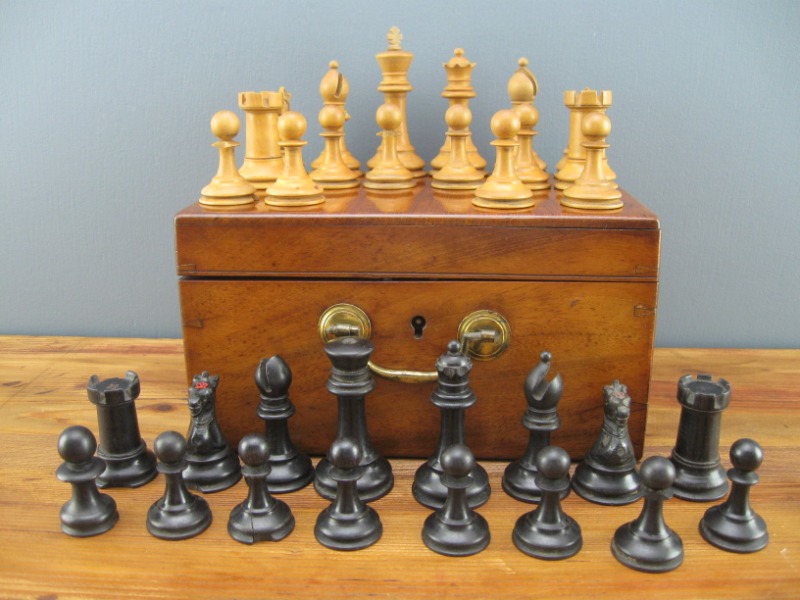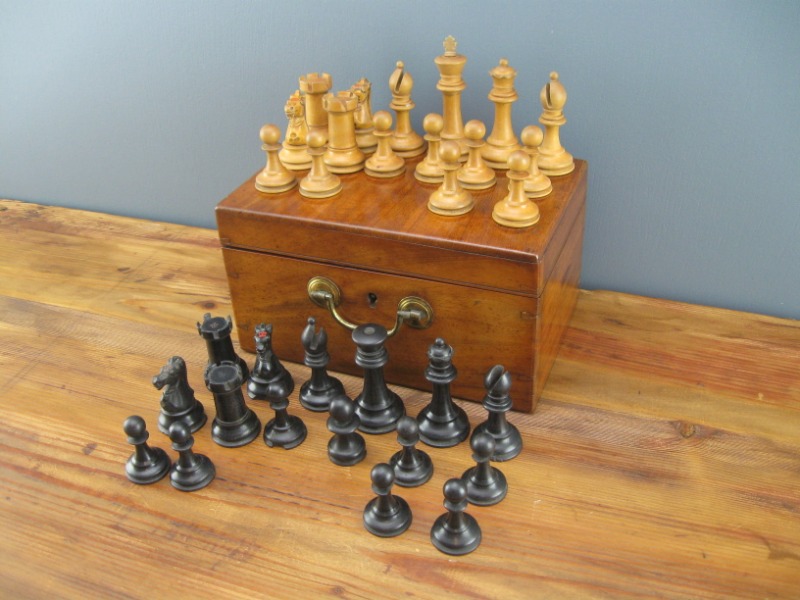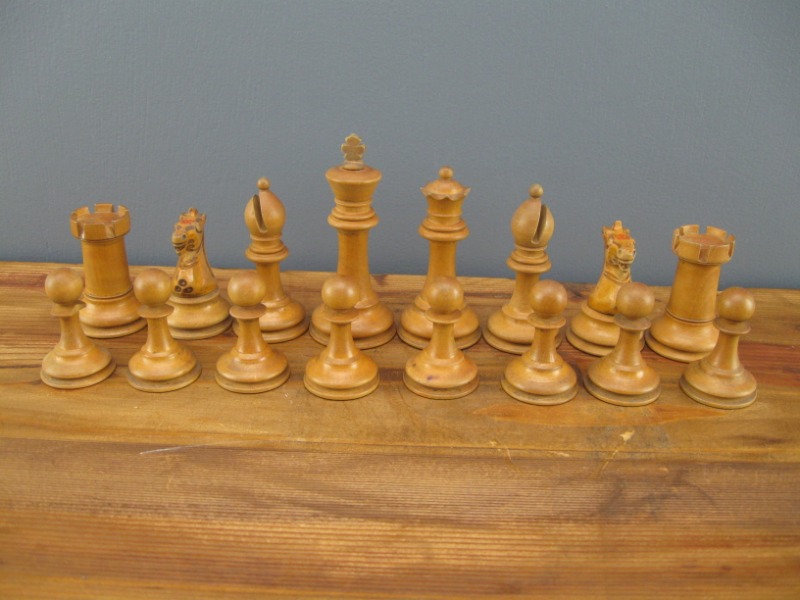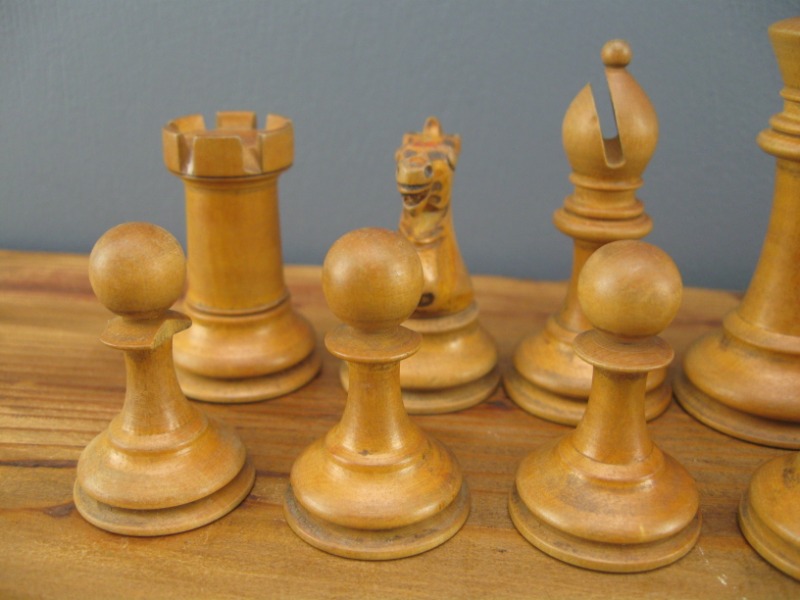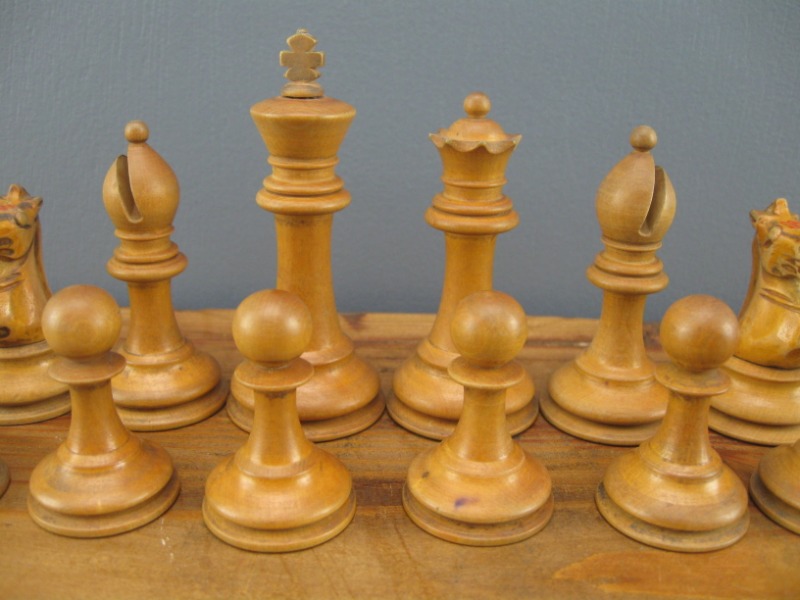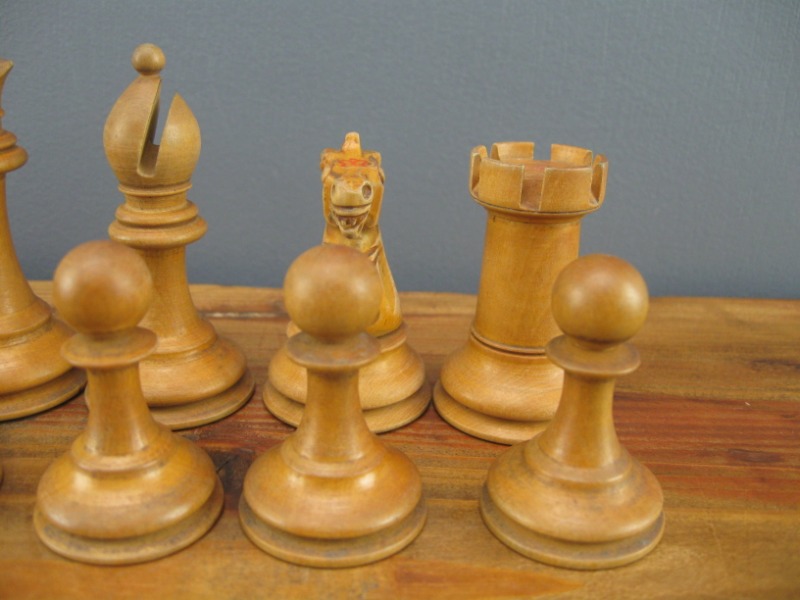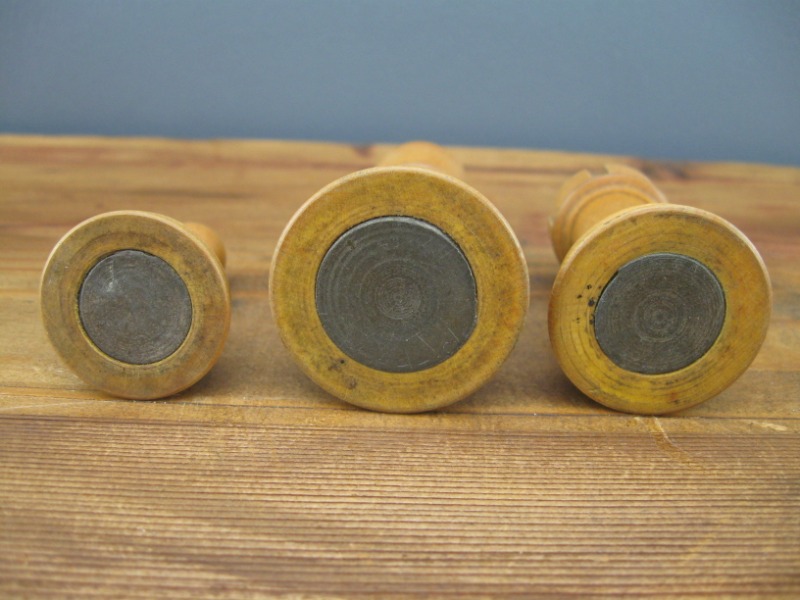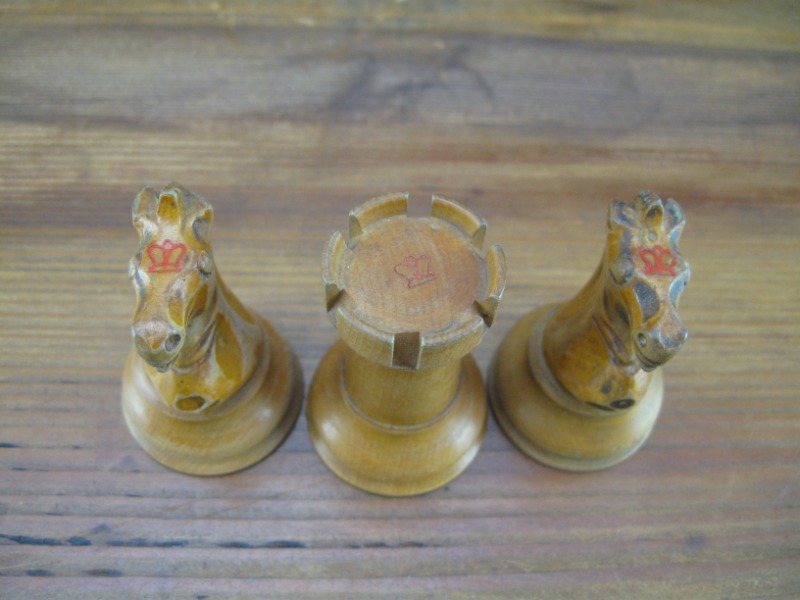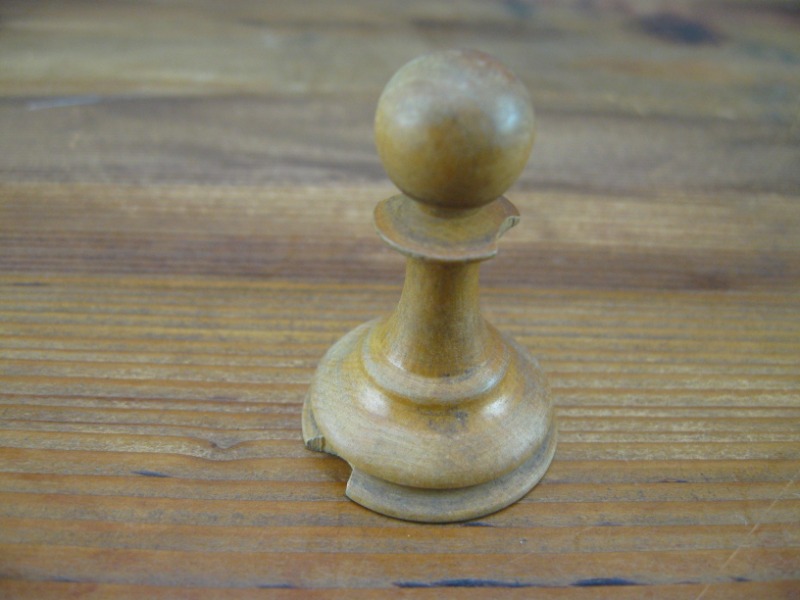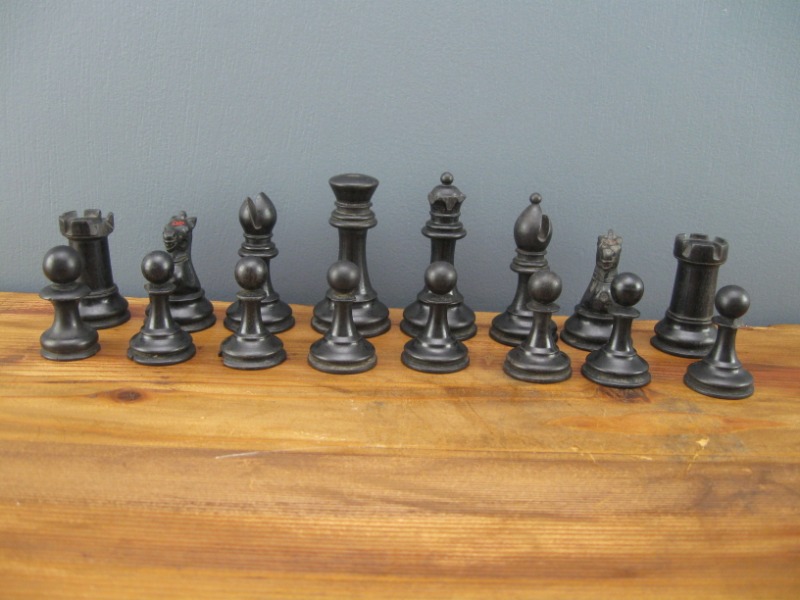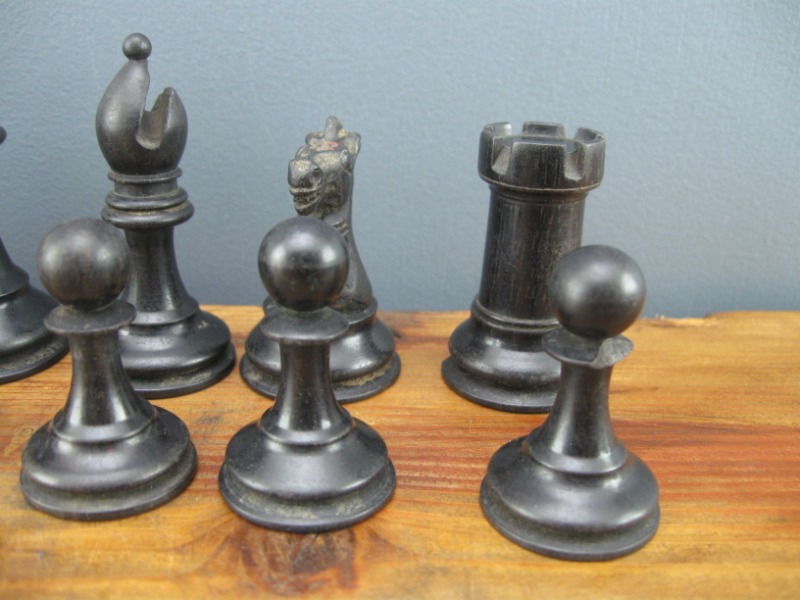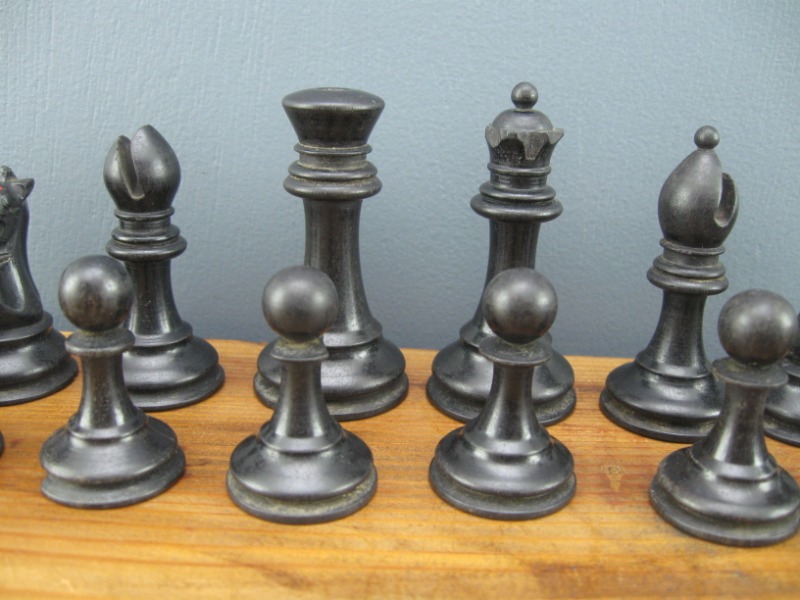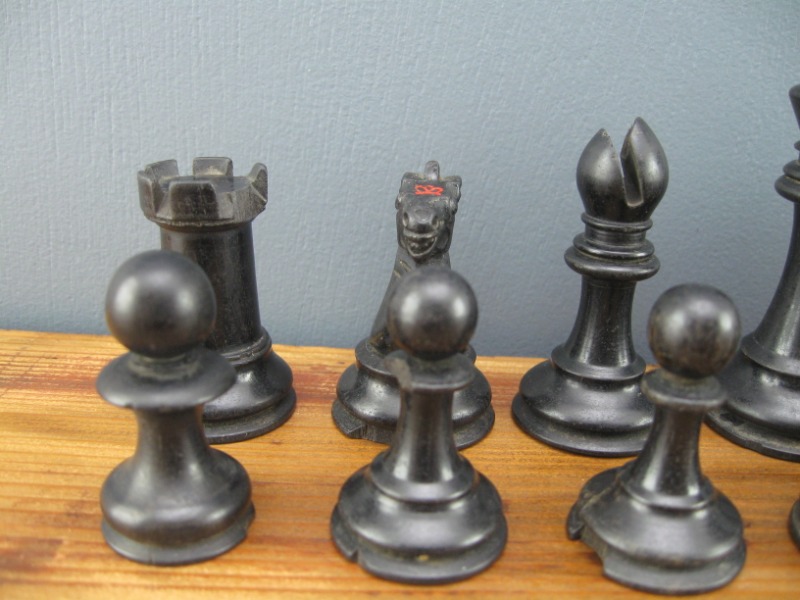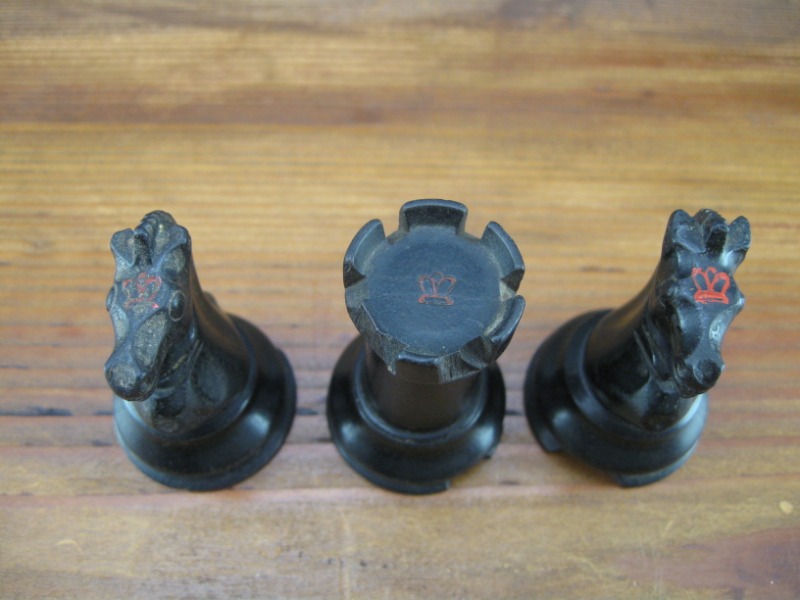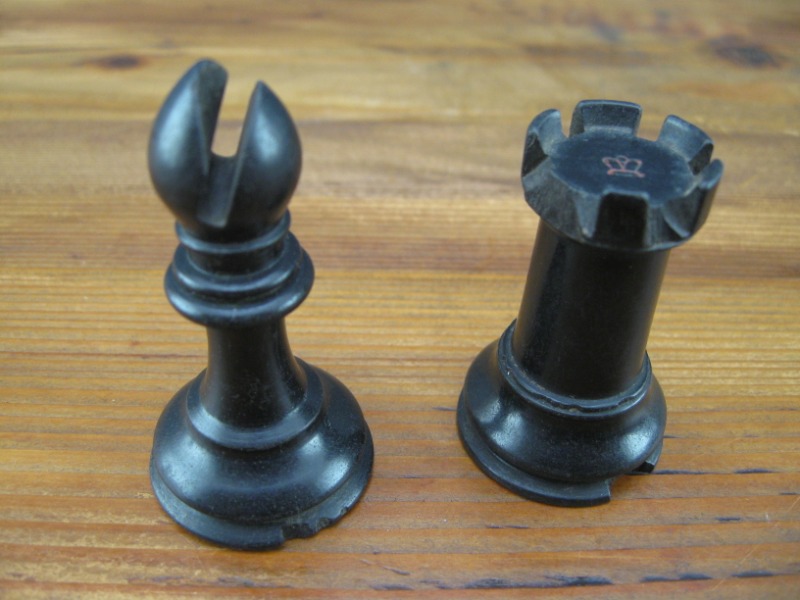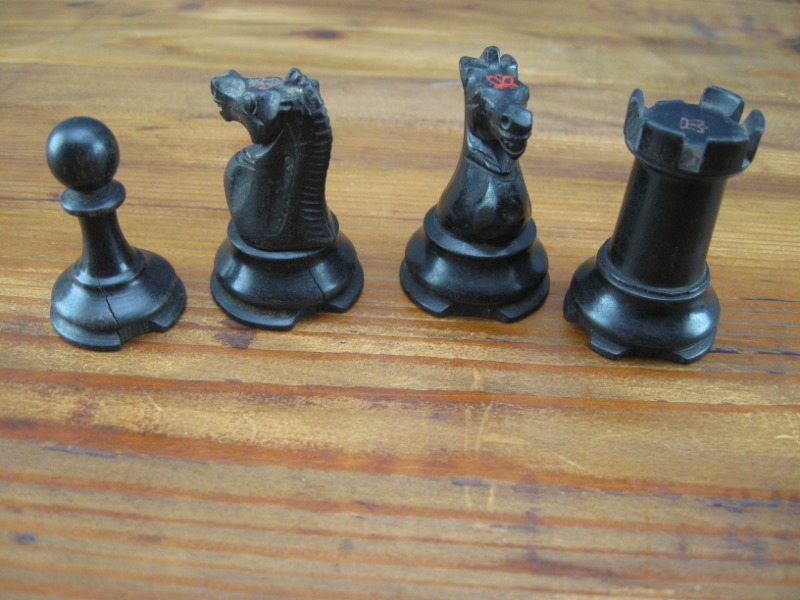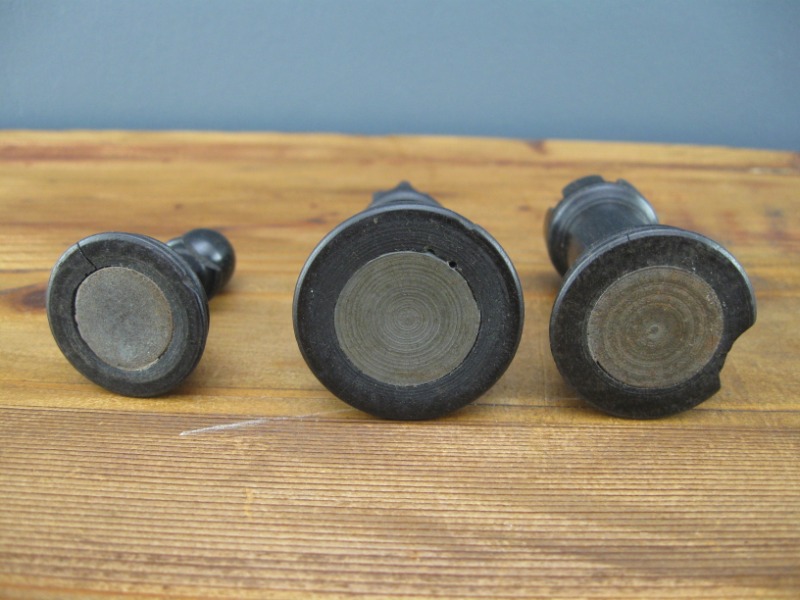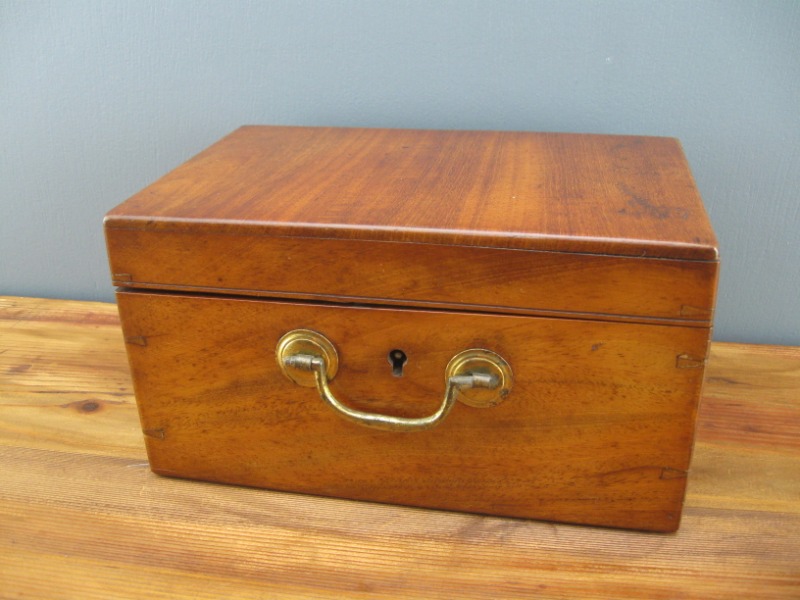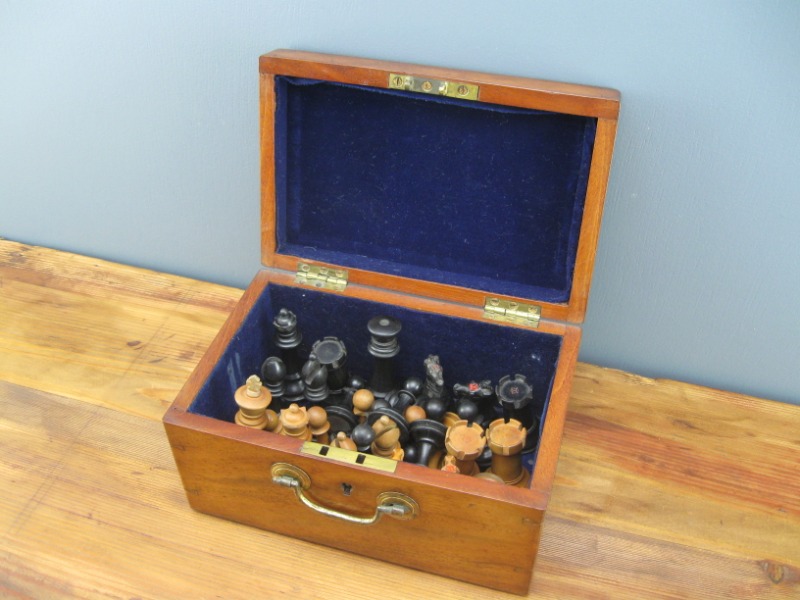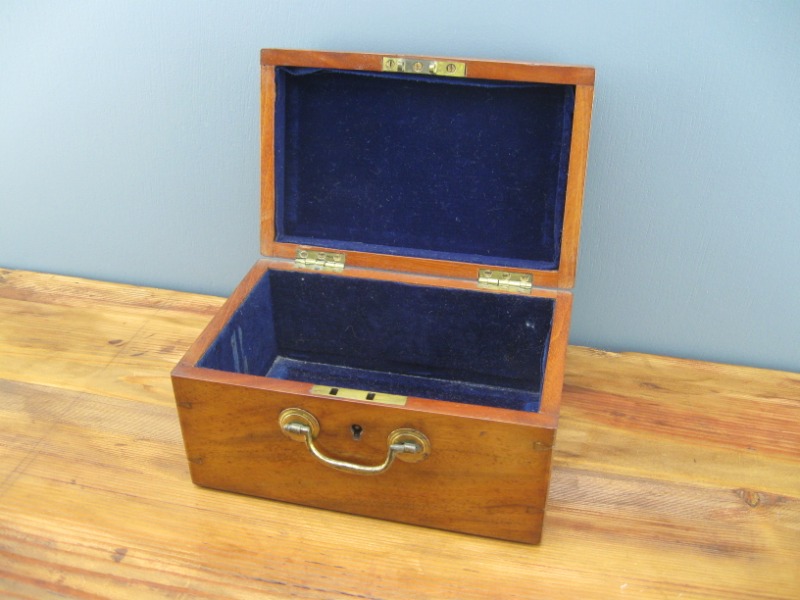Victorian Jaques Staunton Boxwood & Ebony Chess Set in Original Mahogany Box Circa 1880-1890
Age:
19th Century. c. 1880-1890
Material:
Boxwood & Ebony with Mahogany box
Dimensions:
Box: 20cm (w) x 13cm (d) x 11cm
Shipping:
Standard Parcel
Price:
SOLD
Boxed set of Victorian Boxwood and ebony Staunton ChessMen by Jaques circa 1880 - 1890. Mahogany box has blue velvet lining. Each piece has a lead weight in the base to give them extra weight. All four knights and two Rooks (one black and one white) have a red crown printed on their tops.
The Jaques Staunton chessmen are the Rolls Royce of of chess pieces and although this set has a number of issues, it is still a good set to to use.
In early 1849 Nathaniel Cook, Howard Staunton‘s editor at the Illustrated London Times, designed the Staunton chess set at a time when players were refusing to play with each other‘s pieces because of the difficulty in distinguishing the various chess pieces. The main patterns prior to the Staunton pattern were the Lund, Merrifield, Calvert, Barleycorn, Selenius and St George patterns. Cook used symbols in their plainest form. The King had a crown, the Queen had a coronet, the Bishop had a miter, the Knight was a horse‘s head, the Rook was a castle, and the pawn was a ball. The horses‘ heads were based on the Elgin Marbles. These were designs found in the Parthenon frieze and taken to England by Thoms Bruce, 7th Lord of Elgin, in 1806. The pawns were developed from the freemason‘s square and compass. Every symbol was supported on a plain stem rising from a heavy, wide base which gave stability. The design so impressed John Jaques, leading wood carver, that he immediately suggested making the pieces on a commercial basis.
Jaques was a friend of the English chess master, Howard Staunton, who sanctioned the request that the design be called the Staunton chess set. John Jaques was also the brother-in-law of Nathaniel Cook. Jaques obtained a copyright for the design, registering the design under the Ornamental Designs Act of 1842, and began manufacturing the set in London. The wooden pieces were turned from ebony and boxwood and very heavily weighted. Some ivory sets were made from African ivory. King sizes were 3.5 inches or 4.5 inches (for match or tournament play). The first Staunton Pattern chess pieces from Jaques was offered to the public on September 29, 1849.
Condition Note: Damage to a number of pieces. 1 Black Rook (castle) has damage to top. White King may have replacement crown top, Black king is missing crown top. Black Queen has some damage to coronet. One replacement Black Pawn. A number of pieces have damage to base. felt is missing from underside of all piec

